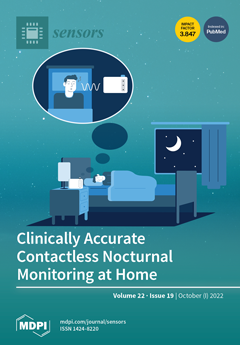Titanium-copper alloy films with stoichiometry given by Ti
Cu
were produced by magnetron co-sputtering technique and analyzed in order to explore the suitability of the films to be applied as resistive temperature sensors with antimicrobial properties. For that, the
[...] Read more.
Titanium-copper alloy films with stoichiometry given by Ti
Cu
were produced by magnetron co-sputtering technique and analyzed in order to explore the suitability of the films to be applied as resistive temperature sensors with antimicrobial properties. For that, the copper (Cu) amount in the films was varied by applying different DC currents to the source during the deposition in order to change the Cu concentration. As a result, the samples showed excellent thermoresistivity linearity and stability for temperatures in the range between room temperature to 110 °C. The sample concentration of Ti
Cu
has better characteristics to act as RTD, especially the
of 1990
C
. The antimicrobial properties of the Ti
Cu
films were analyzed by exposing the films to the bacterias
S. aureus and
E. coli, and comparing them with bare Ti and Cu films that underwent the same protocol. The Ti
Cu
thin films showed bactericidal effects, by log
reduction for both bacteria, irrespective of the Cu concentrations. As a test of concept, the selected sample was subjected to 160 h reacting to variations in ambient temperature, presenting results similar to a commercial temperature sensor. Therefore, these Ti
Cu
thin films become excellent antimicrobial candidates to act as temperature sensors in advanced coating systems.
Full article






